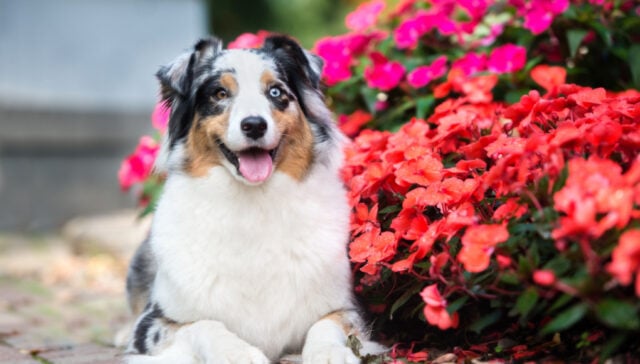
Table of Contents
- Are Begonias Safe for Dogs?
- Are Begonias Safe for Dogs: 3 Toxins With Shocking Health Threats
- Are Begonias Safe for Dogs: Calling the Pet Poison Helpline
- Are Begonias Safe for Dogs: Simple Preventive Measures
- Dog-Friendly and Safe Plant Alternatives for Your Garden
- Watch Out: 11 Other Plants Poisonous to Dogs
- Are Begonias Safe for Dogs: Before You Go…
Owning a dog doesn’t necessarily mean giving up what you’re passionate about.
And if you’re a green activist or a tree hugger, there is a saying that goes: “Know before you grow.”
So if you're a fur parent with a green thumb, it's important to know which plants are safe and not safe for your Fidos.
Why? Because (heaven-forbid) plant poisoning might happen!
Experts from a journal of the National Library of Medicine claim that plant poisoning:
…involve both mature and younger animals which may be led to the ingestion of plant parts by boredom, behavioral alterations, or curiosity…
In Europe alone, 5% to 11% of animal emergencies received by poison help centers are “related to plants.”
Meanwhile, the American Poison Control Center (APCC) recorded a whopping 401,550 pet emergency cases in 2021.
Unfortunately, 79% is attributed to poisoning that includes plant-related cases.
So, are begonias safe for dogs?
This article will help you dissect the nitty-gritty of this beautiful plant and why it’s considered toxic to your dogs.
Without further ado, let’s dig in!
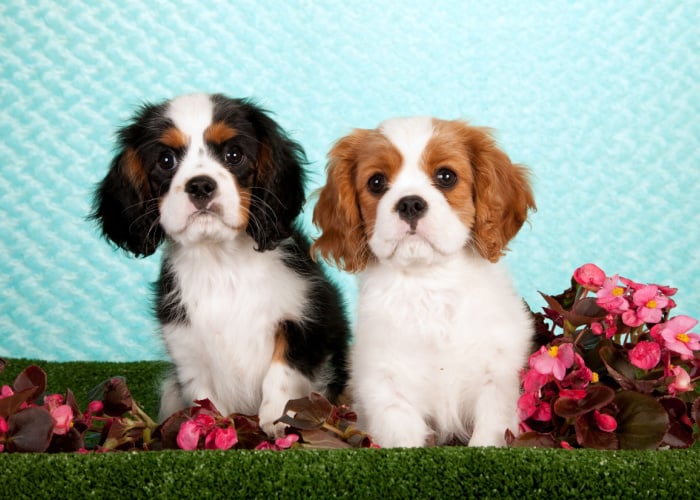
Are Begonias Safe for Dogs?
Begonias are not safe for dogs, especially when ingested.
Not only does it has a bitter, displeasing taste, but it contains toxic compounds that can harm your dogs.
When ingested, begonias can cause mild to severe symptoms of poisoning like vomiting, diarrhea, inability to swallow, and breathing difficulty.
So, be vigilant when you’re spending time outdoors or in the garden with your dogs.
Are Begonias Safe for Dogs: 3 Toxins With Shocking Health Threats
1. Calcium Oxalates
Typically present in most houseplants and ornamentals, calcium oxalates are found in the begonia plant’s tuberous part located underground.
When your dogs accidentally ingest begonias, this toxic property can cause an intense burning sensation in the following:
- Lips
- Mouth
- Throat
- Tongue
If you suspect your dog has eaten begonia plants, watch out for the following poisoning symptoms:
- Choking
- Gagging
- Throat swelling
- Excessive drooling
Begonia plant poisoning in dogs usually occurs immediately or 2 hours after ingestion, depending on the amount ingested.
And if left untreated, serious swelling in the throat can lead to dysphagia or inability to swallow.
Note: Begonia plant poisoning can continue to occur for 2 weeks or more after ingestion.
2. Cucurbitacin B
Similar to some animal species, plants like begonia also have bio-weapons for protection against being eaten.
And despite the begonia plant’s attractive features, it contains toxins called cucurbitacin B.
Generally known as cytotoxic (ability to kill cells), begonia poisoning is a health hazard for your dogs.
Once eaten, your dogs can suffer from intense bitter and displeasing taste along with the following symptoms:
- Irritation
- Diarrhea
- Gagging
- Mouth pain
- Excessive drooling
- Vomiting or retching
- Violent head shaking
- Pawing at the mouth
- Whining, barking, or yelping
And in some cases, the toxic effect of eating begonia can also lead to depression in dogs.
Or worse, dyspnea or shortness of breath.
So, be extra careful when you’re gardening while your pooch is around.
3. Idioblasts
Not necessarily regarded as toxins, but idioblasts in begonia plants are another health hazard for your dogs.
Idioblasts are special cells found in the begonia’s tissues or organs.
This rather weird cell contains non-living components, such as:
- Oil
- Gum
- Latex
- Resin
- Tannin
- Other pigments and minerals
- Raphides (needle-like crystals)
Why are idioblasts harmful to dogs?
When your dogs chew on begonia plants, it will break the tip of the idioblast.
What happens next, it allows the shrub’s sap and/or the canine saliva to penetrate the plant cell.
This phenomenon causes the gelatinous substance to swell and force to expel needle-like crystals to your dog’s mouth surface, including the following:
- Throat
- Tongue
- Stomach
Once embedded in your dog’s body, it can cause immediate discomfort as millions of microscopic needles slowly penetrate your pup’s tissues.
And especially when left untreated, your dogs can suffer from digestive problems as the idioblast can still shoot out raphides.
Trivia: Both toxic and non-toxic plants actually contain idioblasts.
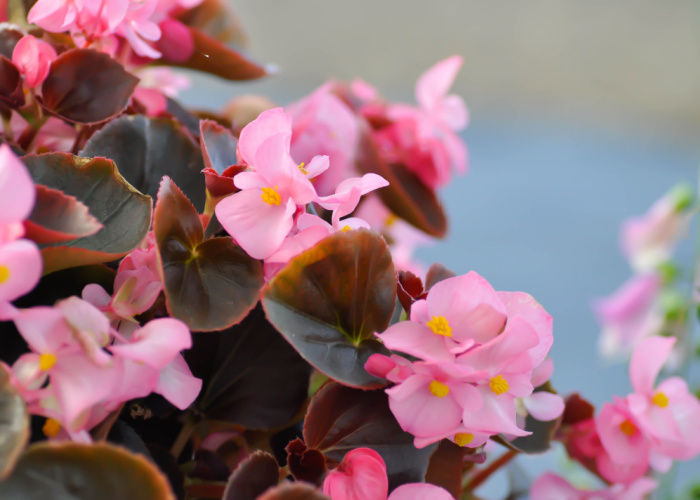
Are Begonias Safe for Dogs: Calling the Pet Poison Helpline
For your dog’s general safety, call the Pet Poison Helpline via (855) 764 – 7661 if they ate a begonia, not just in severe but even in mild cases.
The Pet Poison Helpline is a 24/7 animal poison control center considered to be the only licensed veterinary contact center in the world.
In cases of emergency, the Pet Poison Helpline suggests the following instructions:
Step 1: Remove your dog from the area immediately.
Step 2: Check your dog for any breathing difficulty or abnormal reactions.
Step 3: Do not give any at-home medications or self-remedies.
Step 4: Avoid forcing your dog to vomit without consulting your vet or Pet Poison Helpline.
Step 5: Call Pet Poison Helpline or contact your vet immediately.
You can also contact the following helplines below:
- America’s Poison Center (800) 222 -1222
- The Animal Poison Control Center of the ASPCA (888) 426 – 4435
Important: Be sure to have your vet’s active contact lines in case the above hotlines are unavailable.
Are Begonias Safe for Dogs: Simple Preventive Measures
The following information can help you reduce potential encounters between your dogs and the toxic plant begonia.
Pet-proofing Your Garden
If you’re a pup owner and a hardcore plant enthusiast at the same time…
I know choosing between your beloved dogs and innocent-looking plants can put you in a sticky situation.
But don’t worry; you can totally pet-proof your backyard or your garden.
Building a dog-friendly garden at home may take time and effort, but it sure is a relief for your pooch, too.
So, to help you get started, you can take note of the following suggestions:
- Create raised flower or plant beds
- Put lawn edging to protect borders and beds
- Install a fence door with wailing over 6 ft to prevent your dogs from jumping over it
Securing Indoor Begonia Plants in a Safe Spot
So, if you’re a dedicated plant-savvy and like to set up your indoors with greens and flowering shrubs…
Then, might as well secure your ornamentals away from Fido’s reach.
As you may know, dogs can get a little extra at times and might bump into your flower pots while burning their zoomies.
You’ll never know what your innocent pooch is up to, right?
Or Not Plant Begonias At All
Okay.
So, if you’re thinking of becoming a green panther, at least go with non-toxic or animal-friendly plants.
Are you up for suggestions? Scroll down.
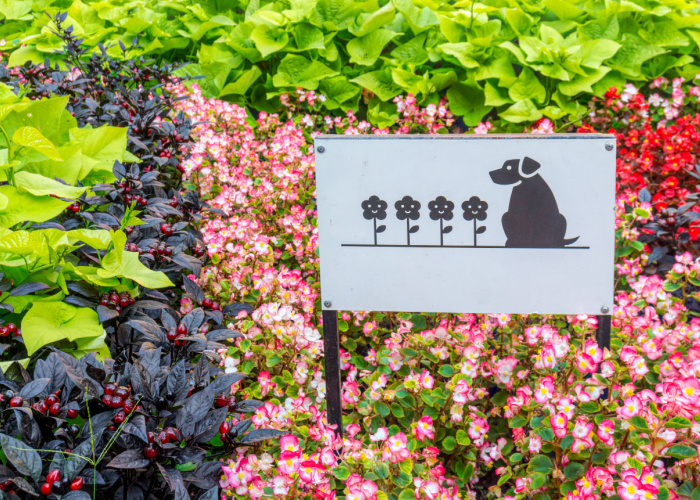
Dog-Friendly and Safe Plant Alternatives for Your Garden
You can still water that green passion while ensuring your dog’s safety at home, too.
So, to give you a few recommendations, here’s a table of dog-friendly plants below:
| Cockscomb or Celosia | Hemlock tree | Nerve Plant |
| Sunflower | Petunias | Magnolia Bush |
| Hibiscus | Fennel | Dill |
| Camellia | Cornflower | Aster |
| Cilantro | Canna Lily | Alyssum |
| Cast-iron plant | Banana | African violet |
| Coral Bells or Heuchera | Grape hyacinth | Pansies |
| Coreopsis or Tickseed | Mahonia | Spider plant |
| Crape Myrtle | Marigolds | Sweet potato vine |
| Creeping Phlox | Mulberry tree | Thyme |
| Cucumber | Nasturtium | Zinnia |
Watch Out: 11 Other Plants Poisonous to Dogs
Vegetables and Herbs Toxic to Dogs
1. Tomatoes, Potatoes, and Peppers
Don’t be confused.
The fruits of these plants are completely edible and safe for your dogs to eat.
Remember: Not all types of pepper are suitable for dogs, such as spicy ones.
However, the stems and leaves of tomatoes, potatoes, and peppers contain a toxic property called solanine.
And when ingested, your dogs can suffer from the following:
- Weakness
- Slow heart rate
- Gastrointestinal problems
2. Onions, Garlic, and Chives
These plants are notoriously blacklisted by most pet owners.
That’s because plants in the Allium family contain compounds called disulfides and thiosulphates.
These substances are toxic to dogs, especially when eaten in large quantities.
And as a result, your dogs can suffer from damage to the red blood cells, such as the following:
- Hemolytic anemia
- Heinz body anemia
- Methemoglobinemia
3. Lavender, Mint, Tarragon, and Oregano
Especially when eaten, these plants can cause digestive issues in your dogs.
Lavender, for instance, contains a small amount of linalool and linalyl acetate, which are not good for pets in large amounts.
Meanwhile, mint ingredients are also present in some dog food brands.
But there’s 1 non-culinary mint variety you should steer clear of — the English Pennyroyal (Mentha pulegium).
Tarragon, on the other hand, contains estragole, which can cause liver damage in your dogs when consumed regularly.
Lastly, the very controversial oregano.
While oregano is home to various antioxidants that help boost your pup’s immune system, this cliché of a statement proves true:
“Too much of something can be bad.”
That being said, too much ingestion of oregano can cause digestive disruption in your Fidos.
Vines That Are Toxic to Dogs
4. Wisteria
This beautiful purple bloom may look elegant in your vertical space.
But beware, this plant contains lectin and wisterin glycoside, which are harmful to dogs.
When ingested, your Fidos can suffer from the following:
- Diarrhea
- Depression
- Vomiting (sometimes with blood)
In severe cases, the lectin toxin can lead to clumping of blood cells, causing clotting and a possible stroke.
Caution: The most toxic part of the wisteria plant is in its seed and seed pods.
5. Sweet Pea
This flowering plant contains a toxin called aminopropionitrile, which can cause the following aftermath in your dogs:
- Death
- Seizures
- Lethargy
- Weakness
Even if your dog nibbled only a small amount of sweet peas, it can still cause great danger.
6. Morning Glory
Well, mornings won’t be as glorious anymore when you find your dogs feasting on ‘em.
What’s the alarm all about?
Morning Glory plants contain lysergic alkaloids that are present in the seeds that can cause vomiting and hallucination in your Fidos.
And some varieties are even more poisonous to dogs, such as the following:
- Ipomoea carnea
- Ipomoea violacea
7. English and Boston Ivy
The 2 most common ivy varieties — English and Boston — are not just notoriously popular landscape accessories.
Unfortunately, these effortlessly elegant houseplants made it on our list today.
That’s because they actually contain natural chemicals like saponins and polyacetylene compounds that can poison your dogs.
When ingested, your dogs can suffer from gastrointestinal distress and hyper-salivating.
Trivia: All ivy varieties are considered to be mildly toxic to dogs.
Popular Flowering Plants That Are Poisonous to Dogs
8. Daisy
While this flowering plant is a must-have for most gardeners, the whole plant is actually a health hazard for your pets at home.
Unfortunately, daisies contain toxins, such as the following:
- Lactones
- Pyrethrins
- Sesquiterpene
And when ingested in large amounts, daisies can cause the following conditions in your dogs:
- Drooling
- Vomiting
- Diarrhea
- Skin irritation
- Incoordination
Note: Gerbera daisies and the blue-eyed African daisy are dog-safe alternatives.
9. Tulips
This bright and elegant plant is yet another nature’s beauty that your furballs should avoid.
Tulips contain glycosides that can be fatal to your pets when ingested, leading to the following conditions:
- Convulsions
- Cardiac problems
- Gastrointestinal discomfort
10. Lily of the Valley
This white, bell-like flowering plant is a gem in your garden — only that it can harm your pet, too.
That’s because Lilies of the Valley contain cardio glycosides that are known as gastrointestinal irritants.
And despite its elegant appearance, the Lily of the Valley’s leaves, flower, or root is toxic to dogs.
Dogs feasting on this plant can suffer from the following conditions:
- Coma
- Death
- Vomiting
- Seizures
- Heart Arrhythmia or irregular heartbeat
11. Daffodil
Yup, daffodils may be too pretty to eat, but not for a mischievous and curious dog.
And if your pooch munches on the plant’s bulb (located underground), the toxic component lycorine can cause the following conditions:
- Vomiting
- Diarrhea
- Convulsions
- Cardiac issues
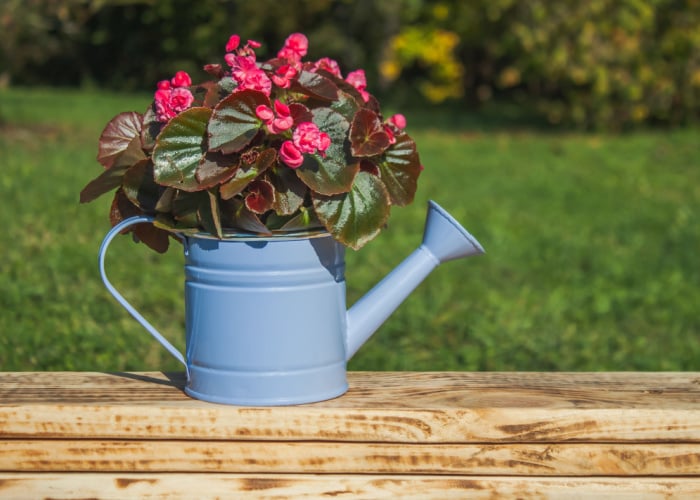
Are Begonias Safe for Dogs: Before You Go…
While it’s a relief that not all plants are poisonous to dogs, prevention is still the best cure you can give.
Especially if you’re a plant aficionado, it’s beneficial to go for greens that are pooch-friendly, too.
So, are begonias safe for dogs?
The straight answer is no.
But you can follow preventive measures in your garden or indoor landscapes if you desire to plant one.
More of this content? Check out our recommendations below!












